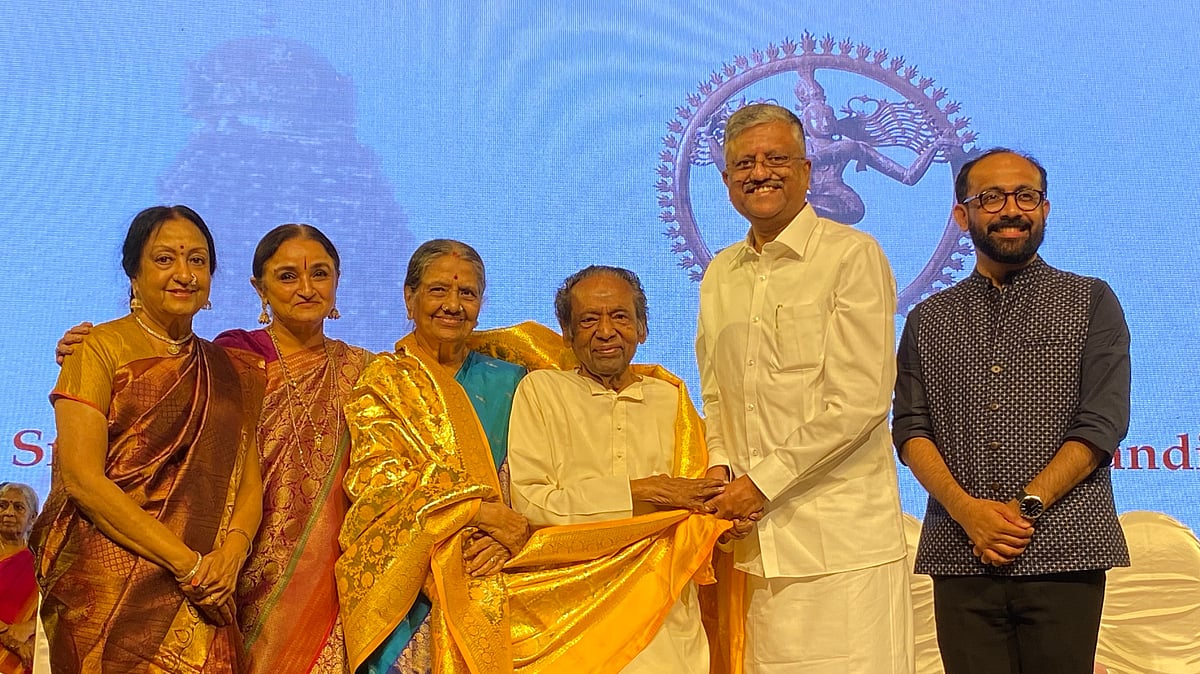Mumbai News: Sri Rajarajeswari Bharatha Natya Kala Mandir Celebrates 80 Years Of Preserving Bharatanatyam Tradition
Founded in 1945 by Guru A. T. Govindraj Pillai and his wife Karunambal, the institution began as a modest effort to nurture classical dance in the city.

Mumbai: The Sri Rajarajeswari Bharatha Natya Kala Mandir, Matungaone of Mumbai’s oldest and most respected institutions for classical dance training celebrated its 80th anniversary this week, marking eight decades of commitment to the art of Bharatanatyam.
A Legacy Rooted in Thanjavur’s Cultural Heritage
Founded in 1945 by Guru A. T. Govindraj Pillai and his wife Karunambal, the institution began as a modest effort to nurture classical dance in the city. The fledgling centre later received invaluable support and guidance from Bharatha Vidwan, maestro T. P. Kuppiah Pillai, the founder’s father-in-law, and his family, who migrated from Thanjavur, a renowned hub of art and culture.
From Four Students to a Premier Institution
Starting with just four students, the Kala Mandir evolved into a major cultural institution under the stewardship of the founders’ sons—Guru T. K. Mahalingam Pillai and Guru K. Kalyanasundaram—who transformed it into Mumbai’s premier Bharatanatyam training centre.
Felicitation of a Living Legend
At a special event held on Thursday at the Sri Shanmukhananda Auditorium, Sion, the school’s 93-year-old director, Guru K. Kalyanasundaram, and his wife Mythili Kalyanasundaram, were felicitated by Shrimant Babaji Rajah Bhosle Chhatrapati, head of the Maratha royal family of Thanjavur. The celebration featured a vibrant performance by 80 young Bharatanatyam students, paying tribute to the school’s remarkable legacy.
The Evolution of Bharatanatyam
Bharatanatyam is believed to have originated during the Sangam Age (500 B.C.–500 A.D.), when temples served as both places of worship and centres of art. Devadasis, or temple dancers, performed ritual dances in nata-mandapas (temple dance halls) as offerings to deities.
Over the centuries, the dance form flourished under the Pallava and Chola dynasties until the 12th century and later under Pandya, Nayak, and Maratha rulers in the 19th century. The Nattuvanars, hereditary dance masters, preserved and passed down this ancient tradition through generations.
ALSO READ
Revival and Renaissance in the 20th Century
After a brief decline, Bharatanatyam witnessed a revival in the early 20th century, thanks to cultural reformers and visionaries. In 1927, E. Krishna Iyer, a lawyer and passionate advocate of classical arts, organised the first All India Music Conference in Madras during an Indian National Congress session, which later gave birth to the Music Academy in 1928.
As India’s independence movement gained momentum, Bharatanatyam became an expression of cultural pride, producing luminaries such as Pandanallur Jayalakshmi, Jeevaratnam, Balasaraswathi, Rukmini Devi Arundale, Ram Gopal, and Mrinalini Sarabhai, among others all disciples of Pandanallur Guru Meenakshisundaram Pillai.
RECENT STORIES
-
-
-
-
-